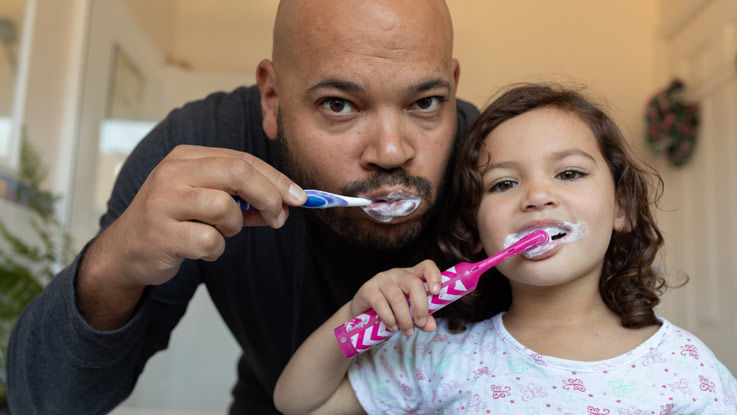Comparing dental insurance plans
How to compare individual, family and senior dental insurance plans
Good oral health is a crucial part of your overall health, so having the right dental plan that protects your smile is important. Dental insurance can help cover preventive services and also make it easier to pay for more complex procedures when they’re needed. We’re here to help you learn how to compare dental plans and costs, and what you should consider when buying dental insurance.

Important things to consider when comparing dental insurance plan costs
When comparing dental plans, there’s a lot to think about, especially when it comes to out-of-pocket costs. But before you start looking at plans, it’s helpful to understand some common dental insurance terms that will come into play when you’re evaluating your options:
- Dental insurance premiums – This is how much you’ll pay every month for your plan, whether you use your insurance or not.
- Dental insurance deductibles – This is how much you’ll pay for covered dental services before your plan starts helping with your costs. After you meet your deductible, your plan starts to help pay.
- Dental coinsurance – This is the percentage you’ll pay for a service after your deductible has been met. Your plan pays for the rest, up to its annual max.
- Dental copayments – Sometimes, instead of coinsurance, you might pay a copay when you visit your dentist. You’ll usually pay a fixed cost at the time of your appointment, and then your plan pays all remaining costs, up to its annual max.
- Dental coverage waiting periods – This is an amount of time you may need to wait before you can use certain plan benefits. Be sure to check with your plan for details: Some waiting periods may not apply, or you may be able to have them waived. (Most plans cover
preventive dental care right away, without any waiting periods.)
Keep in mind: Your annual maximum benefit
An annual maximum benefit is the most your plan will pay for your dental care within a specific amount of time, usually a year. Your plan may also call this your annual maximum allowance or coverage limit.
While medical insurance plans don’t have these kinds of limits on what they pay, dental insurance plans usually do. After the dental plan has paid their annual maximum, you’re responsible for all remaining costs.
For example, let’s say your dental insurance plan has no deductible and an annual maximum of $1,000. You need a dental procedure that costs $100.
- If your plan covers that procedure at 80%, you’d pay $20 and your plan would pay the remaining $80.
- You’d then have $920 of your plan’s annual maximum benefit remaining for the rest of the year. In other words, $920 is the most your plan will pay toward all your dental care for the rest of the year.
Your annual maximum benefits reset each year. Unless you need significant dental care, you likely won’t reach the maximum, but it’s good to keep it in mind when comparing your options.

Comparing your dental insurance coverage options
Most dental insurance plans can be broken down into three categories. When choosing one that fits your needs, it’s helpful to factor several things in to your decision: Do you anticipate needing major dental work, or just basic preventive care? Would lower monthly premiums and higher costs when you need care fit your budget?
Whether or not you’ve purchased individual or family dental insurance before, think about how you might use your dental plan. Below, we’ll cover the standard categories of dental plans.
Three dental plan categories
What about orthodontics and cosmetic procedures?
Orthodontics (like braces or retainers) and oral cosmetic procedures (like teeth whitening) aren’t typically covered under most self-purchased dental plans. Some group plans, like the kind you get through work, may include orthodontic coverage, but it varies by employer.

Comparing senior dental insurance plans and Medicare
Self-purchased dental insurance coverage for seniors has the same categories of coverage for younger people. But senior plans usually focus more on dental care you may need as you get older, like dentures, tooth replacement and tooth extraction. Like many other dental plans, senior dental plans usually cover 100% of routine preventive care.
Keep in mind that if you have
If you have a private Medicare plan, it may include dental benefits, but not all do. You may be able to add on
